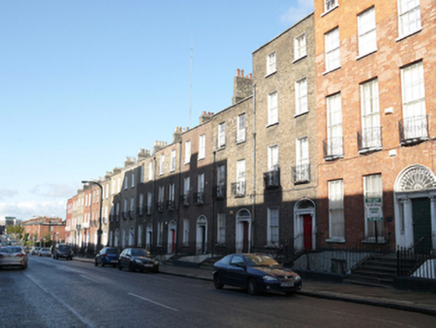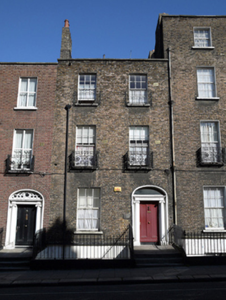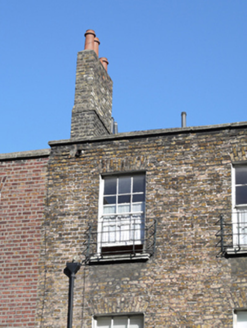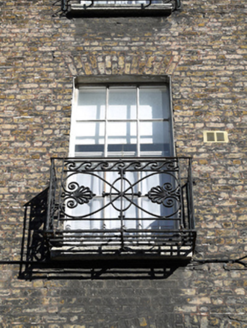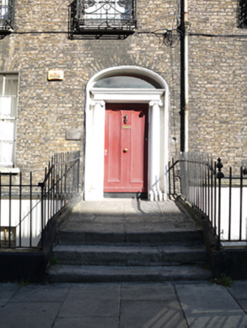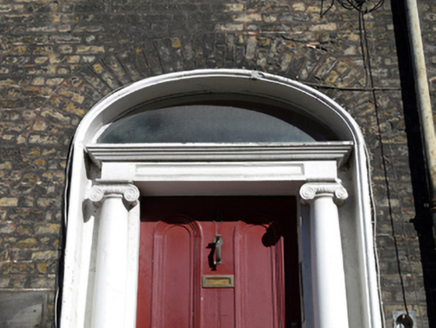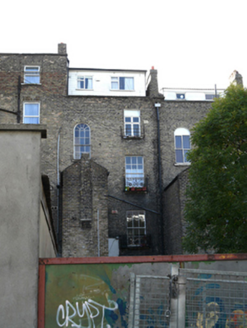Survey Data
Reg No
50010787
Rating
Regional
Categories of Special Interest
Architectural, Artistic
Original Use
House
In Use As
House
Date
1830 - 1850
Coordinates
316059, 235626
Date Recorded
07/10/2011
Date Updated
--/--/--
Description
Terraced two-bay three-storey house over exposed basement, built c.1840, with original three-storey return. Replacement single-span roof with additional attic storey and full-span dormer to rear pitch, set behind parapet wall with granite coping. Raised stepped brick chimneystacks with terracotta pots to north party wall. Yellow brick walls laid in Flemish bond with original lime pointing, set on painted granite plinth course above rendered basement wall. Yellow brick walls laid in English garden wall bond to rear elevation. Gauged brick flat-arched window openings with timber reveals, painted granite sills and early replacement six-over-six pane timber sliding sash windows with angled horns and some historic glass throughout. Round-headed six-over-six pane timber sash window to rear stair hall. Cast-iron balconettes to first floor windows repeated to ground and first floor of rear elevation with wrought-iron window guards to second floor of front and rear elevations. Gauged brick three-centred arched door opening with moulded masonry surround and painted masonry Ionic doorcase, with original timber door with two arched flat panels and bolection mouldings, flanked by engaged Ionic columns on plinth bases supporting panelled lintel cornice and plain fanlight. Door opens onto granite platform and three granite steps bridging basement area. Platform and basement area enclosed by original wrought-iron railings on moulded granite plinth wall. Rear site enclosed to Fitzgibbon Lane by steel gates.
Appraisal
This house is still in single occupancy and remains one of the most intact examples on the terrace. Forming part of a terrace of six similar two-bay houses to the centre of Belvedere Place, which was developed in the 1840s, it is built in an identical style to the northernmost terrace and completes the coherent streetscape. The doorway is typical of this terrace, with classically-inspired detailing. The capitals to the columns, and the decorative cast-metal balconettes provide visual and decorative interest. The retention of timber sash windows enhances the architectural conservation quality of the house, and the appropriate stone landing and steps to the entrance, and plinth and railings to the basement area, define the street edge in a pleasing manner. Laid out in 1795 and named after the Earl of Belvedere, Belvedere Place connects Mountjoy Square to Dorset Street, via the North Circular Road, on a gentle descent with a pronounced rhythm and verticality to the streetscape. This house has lost its original roof but retains a wealth of original fabric including a good doorcase, correctly specified replacement timber sash windows, ironmongery and an original return, and plays an important part in retaining the overall impression of the terrace that extends the grandeur of Mountjoy Square on a more modest scale to the north.
